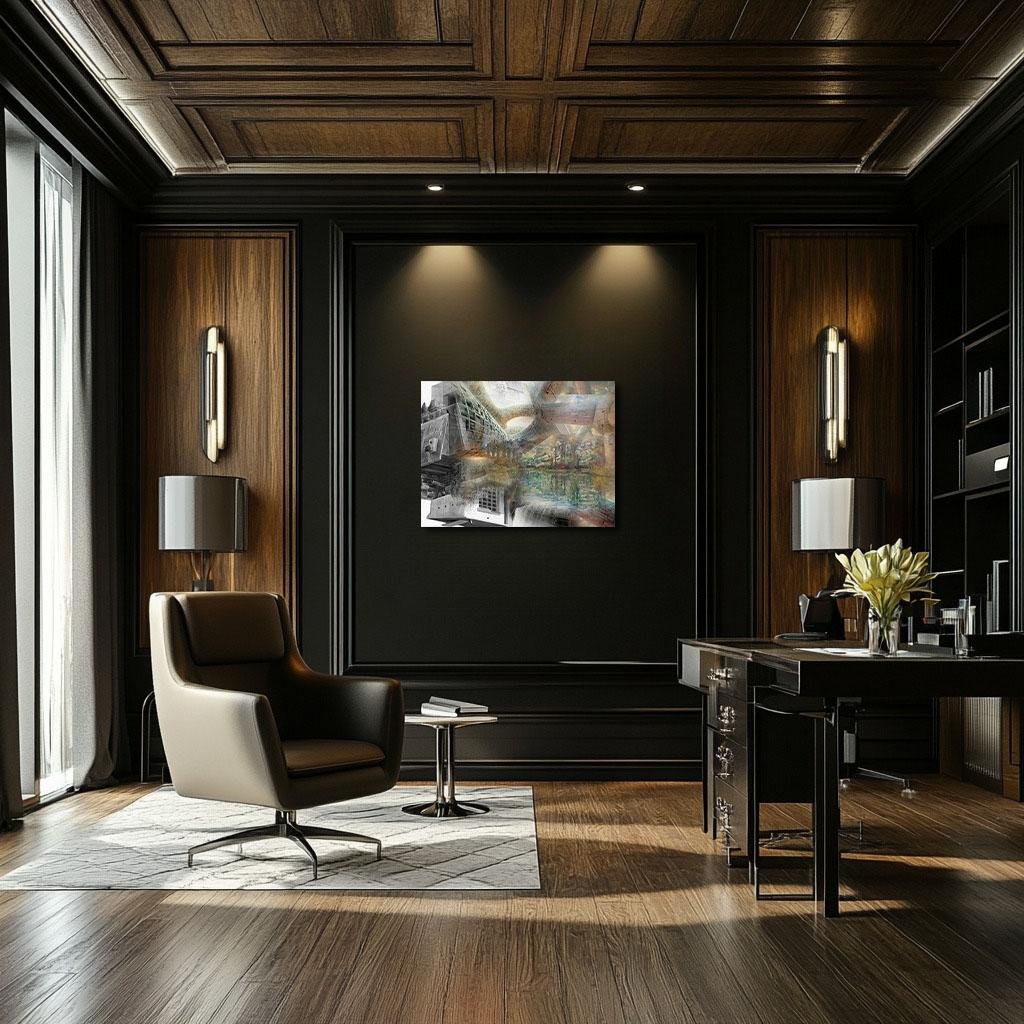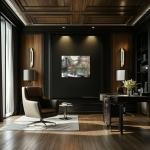Reflections of Tomorrow: The Seine near Vétheuil in Structural Reverie
Reflections of Tomorrow: The Seine near Vétheuil in Structural Reverie reimagines Monet’s 1880 river landscape as a visionary intersection between natural beauty and futuristic architecture. The soft brushstrokes of trees and rippling water merge with soaring, translucent structures that float above the Seine like living systems of thought. As the past meets the imagined future, this conceptual digital art becomes a gentle meditation on how humanity might one day build not against the land, but in quiet harmony with it. A visual journey from memory to aspiration, where the river flows through time, bearing both reflection and renewal.
Please see Below for Details…
Hotline Order:
Mon - Fri: 07AM - 06PM
404-872-4663
Claude Monet’s The Seine near Vétheuil , painted in 1880, offers one of the most peaceful moments in his lifelong dialogue with the river. Bathed in gentle light, framed by trees leaning toward the water, and rippled with his iconic brushwork, the original painting was an ode to balance—between movement and stillness, presence and impermanence. In this conceptual digital reinterpretation, titled Reflections of Tomorrow: The Seine near Vétheuil in Structural Reverie , the tranquil river landscape becomes a mirror for future consciousness. Blending the organic softness of Monet’s brush with towering forms of imagined architecture, this work examines how the natural and the constructed might one day coexist not in conflict, but in dreamlike fusion.
At the heart of the composition, Monet’s scene remains intact. Trees rise along the shoreline, their leaves catching dappled sunlight, while reflections dance across the surface of the Seine. But this nature is no longer alone. It now rests beneath an immense, floating architecture—an impossible lattice of tubular steel, glass, and light. These structures arc above the river like great neural pathways or floating urban branches, forming a canopy that feels neither oppressive nor alien. They are extensions of thought, suspended cathedrals of engineered wonder.
The juxtaposition of these architectural forms with Monet’s landscape is not meant to create friction, but resonance. The tubes, with their transparent matrices and curved intersections, resemble natural growth—the arteries of some new kind of forest. They are not machines of conquest. They are the bones of shelter, possibility, expansion. They float above the river as if grown from the future’s imagination rather than forged in cold industry. Their presence asks the viewer to consider whether technology can bend, soften, and harmonize rather than dominate.
To the left, the image begins in grayscale—a stark, more earthbound fragment of brutalist architecture. This portion grounds the scene in our present, reminding us of the rigid linearity that often defines our built environments. Square windows, concrete walls, flat angles. This part of the image resists the softness of the river and the sky. It is not yet dreaming. It is memory. It is boundary. But as the viewer’s eye moves toward the center and the right, the rigidity dissolves into curvature, flow, translucency. As though architecture is remembering how to breathe again.
Within the mirrored water of the Seine, both the trees and the futuristic structures find equal space. Reflections blur and intertwine, creating a space where past and future kiss in light. This river is no longer just water—it is memory, conduit, and consciousness. It flows not only through land, but through time.
Color becomes the soft dialogue across the composition. The left side remains muted, almost clinical in tone. As the scene moves right, color gently emerges—warm greens and ochres in the trees, iridescent blues and violets in the tubular surfaces, echoing the original palette Monet employed. But these colors are more than aesthetic—they are emotional registers. They suggest an evolution from limitation to openness, from box to circle, from fixed to flowing.
What makes this work resonate is its quiet proposal: that the future may hold not erasure, but embrace. That we may learn to build not over nature, but with it. That Monet’s gentle river might one day be watched over by structures shaped with reverence, not control. That the Seine, once painted with light, may one day pulse with something even more alive—connection.
As the artist, I approached this piece as both reflection and hypothesis. I wanted to imagine not a world where Monet’s legacy is preserved behind glass, but one where it is continued—in form, in feeling, in evolution. What if his love for the play of light became a language for architecture itself. What if future cities were shaped not by speed, but by stillness. What if the Seine continues to teach us how to see, how to reflect, how to shape without harm.
Reflections of Tomorrow does not promise utopia. It does not escape the weight of now. But it offers a possibility—that nature and structure, past and potential, can become one scene, one breath, one seamless horizon.
Add your review
Your email address will not be published. Required fields are marked *
Please login to write review!
Looks like there are no reviews yet.








